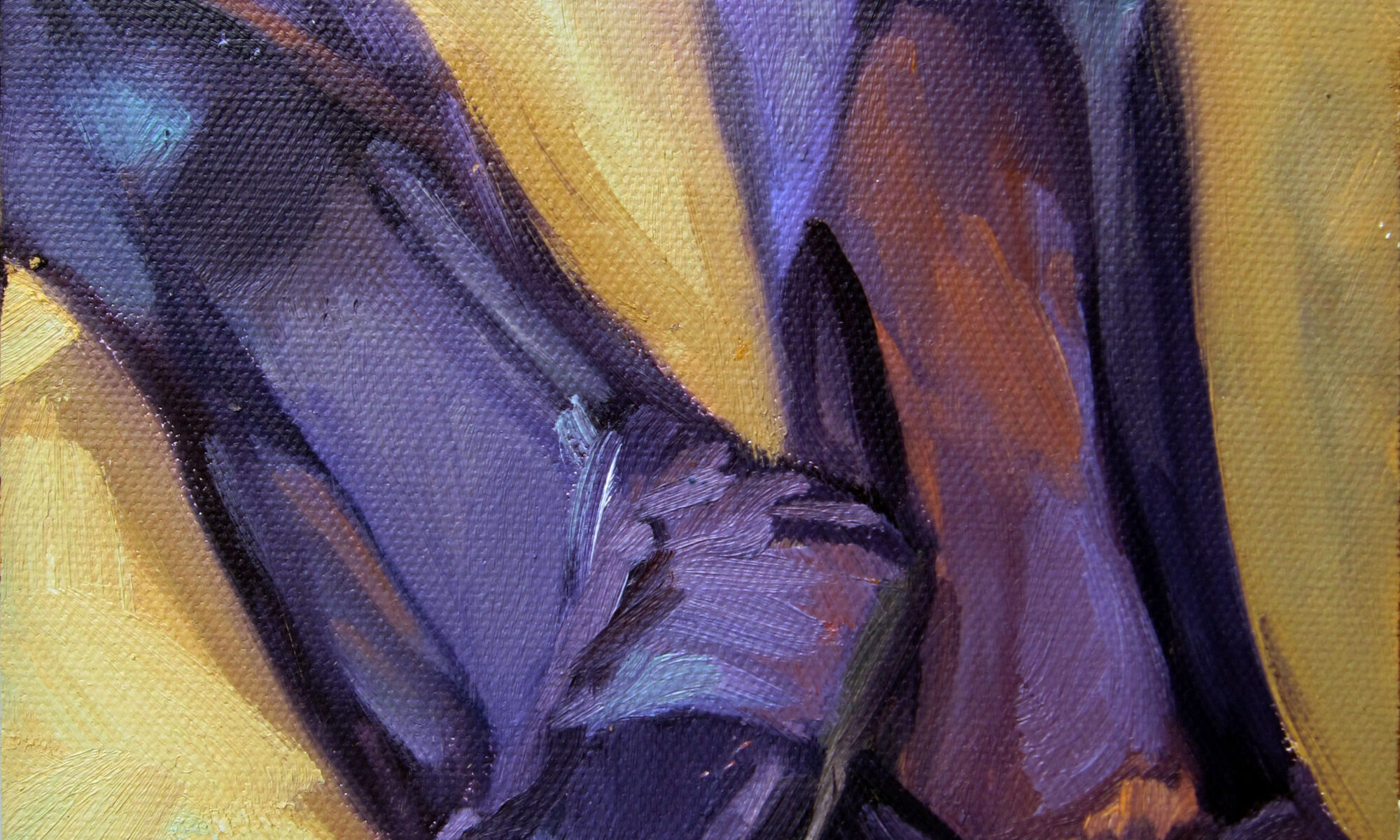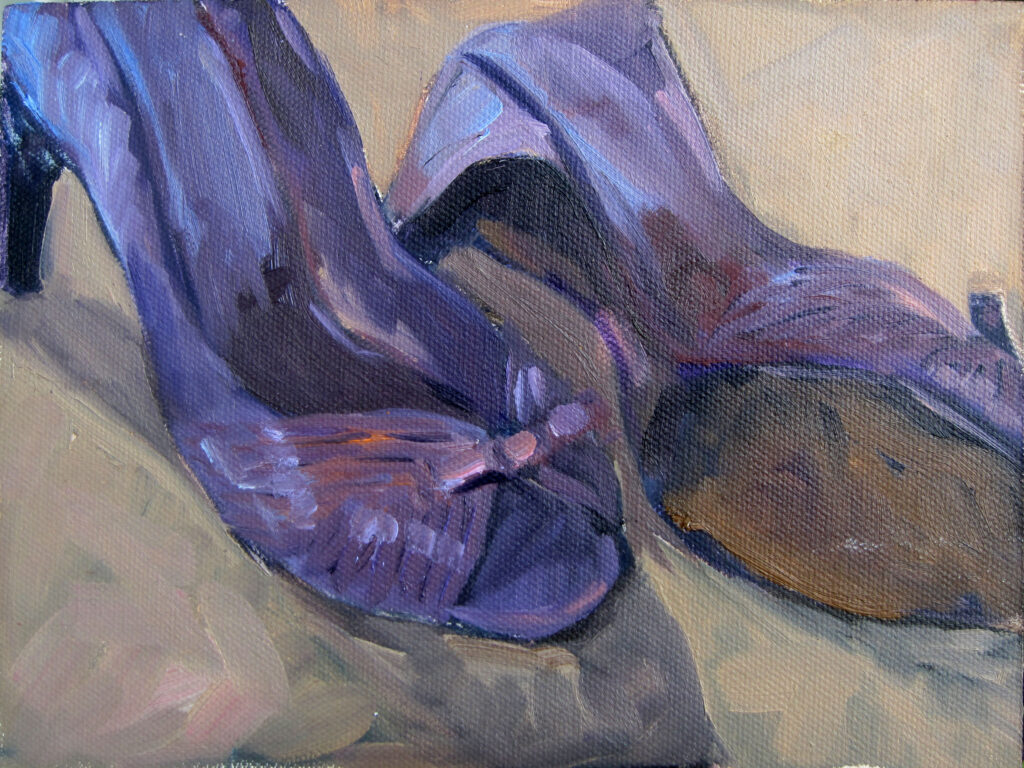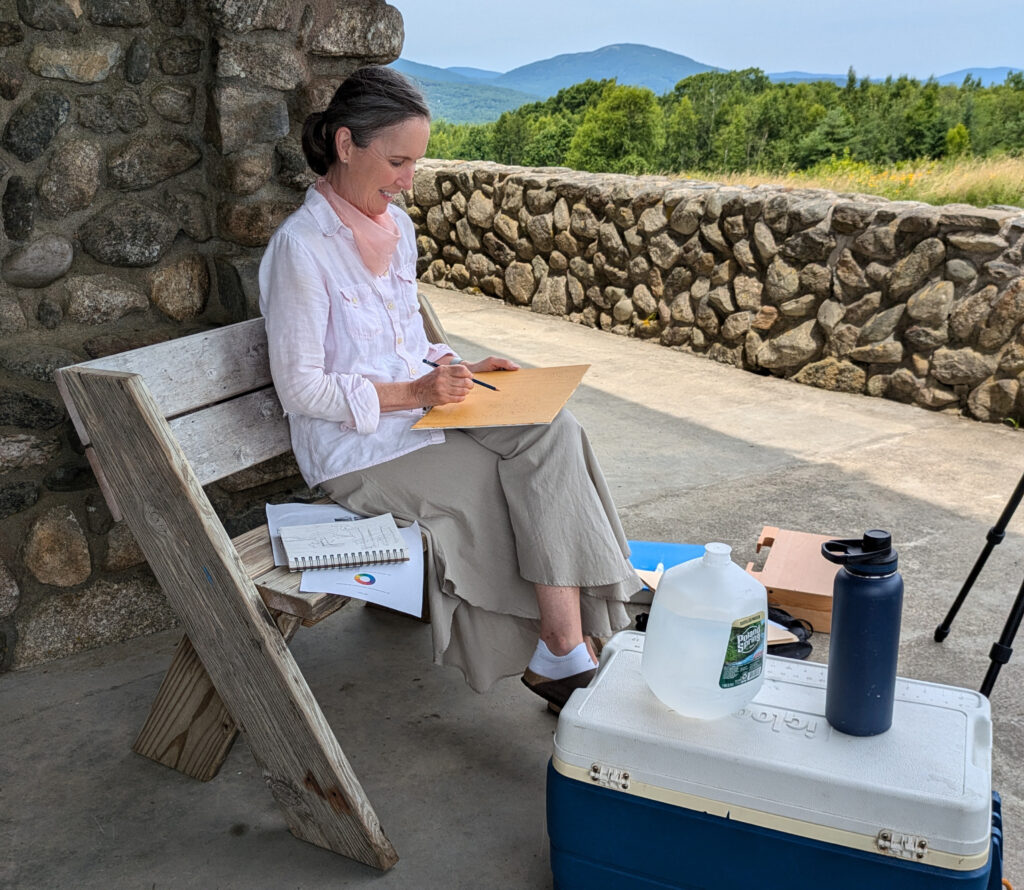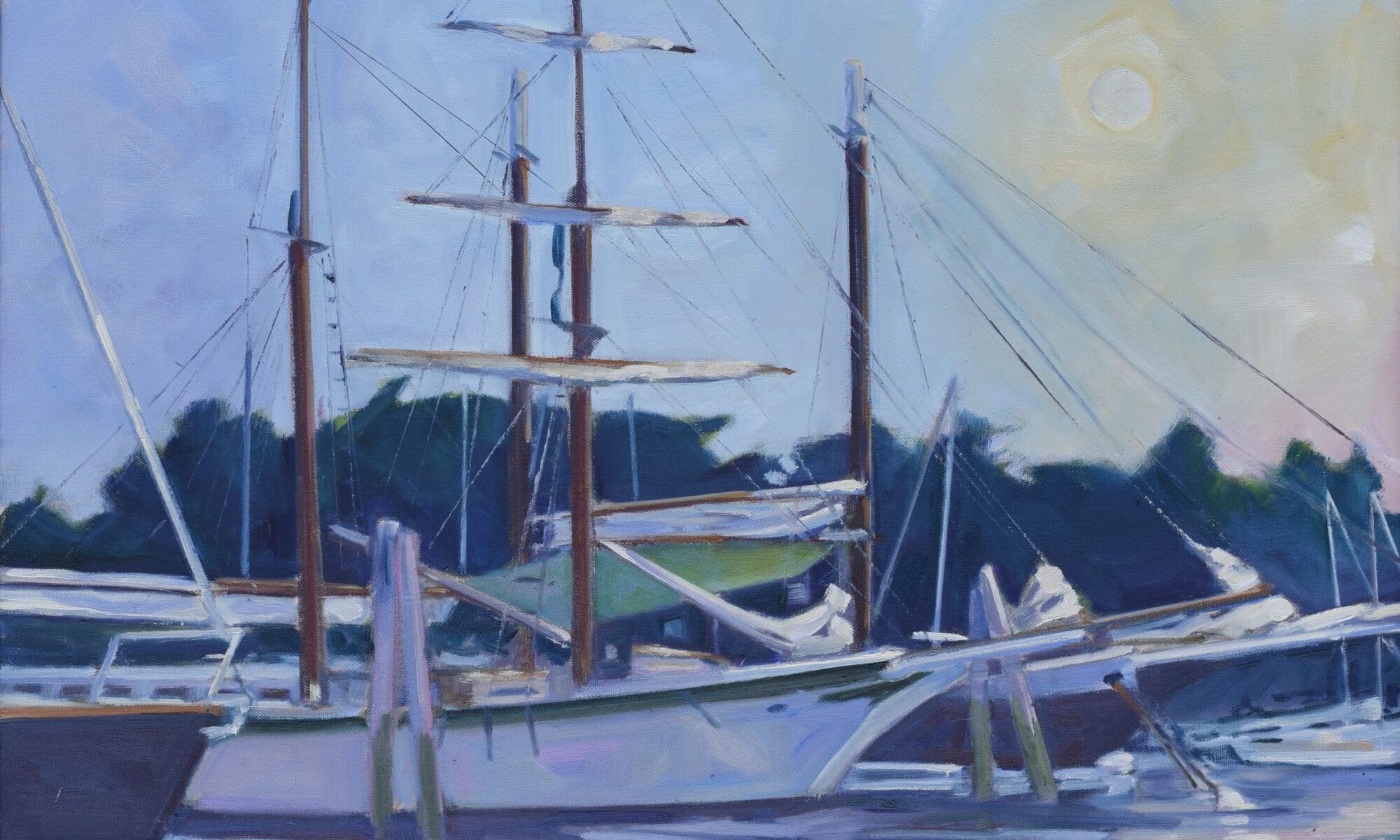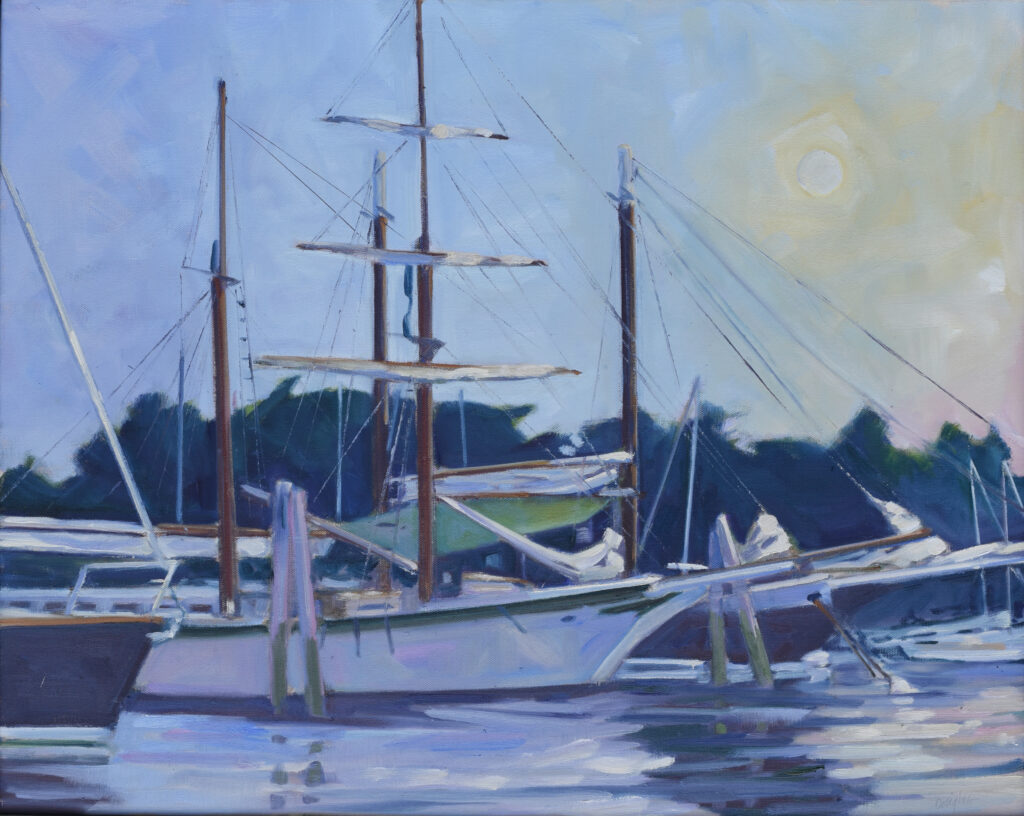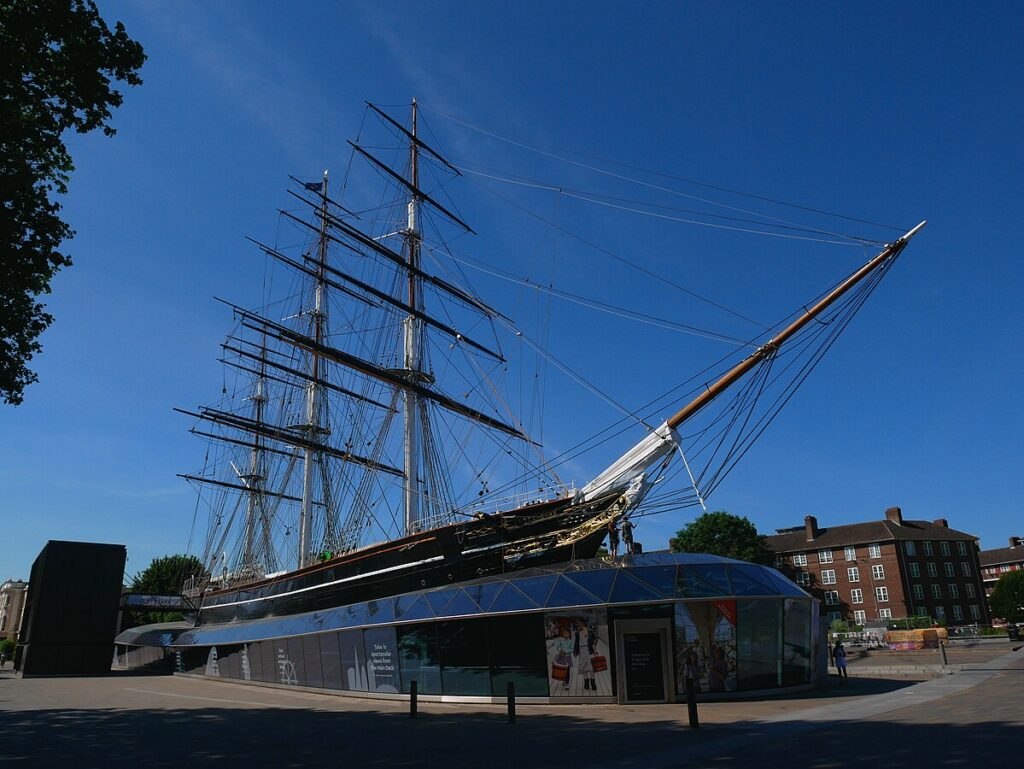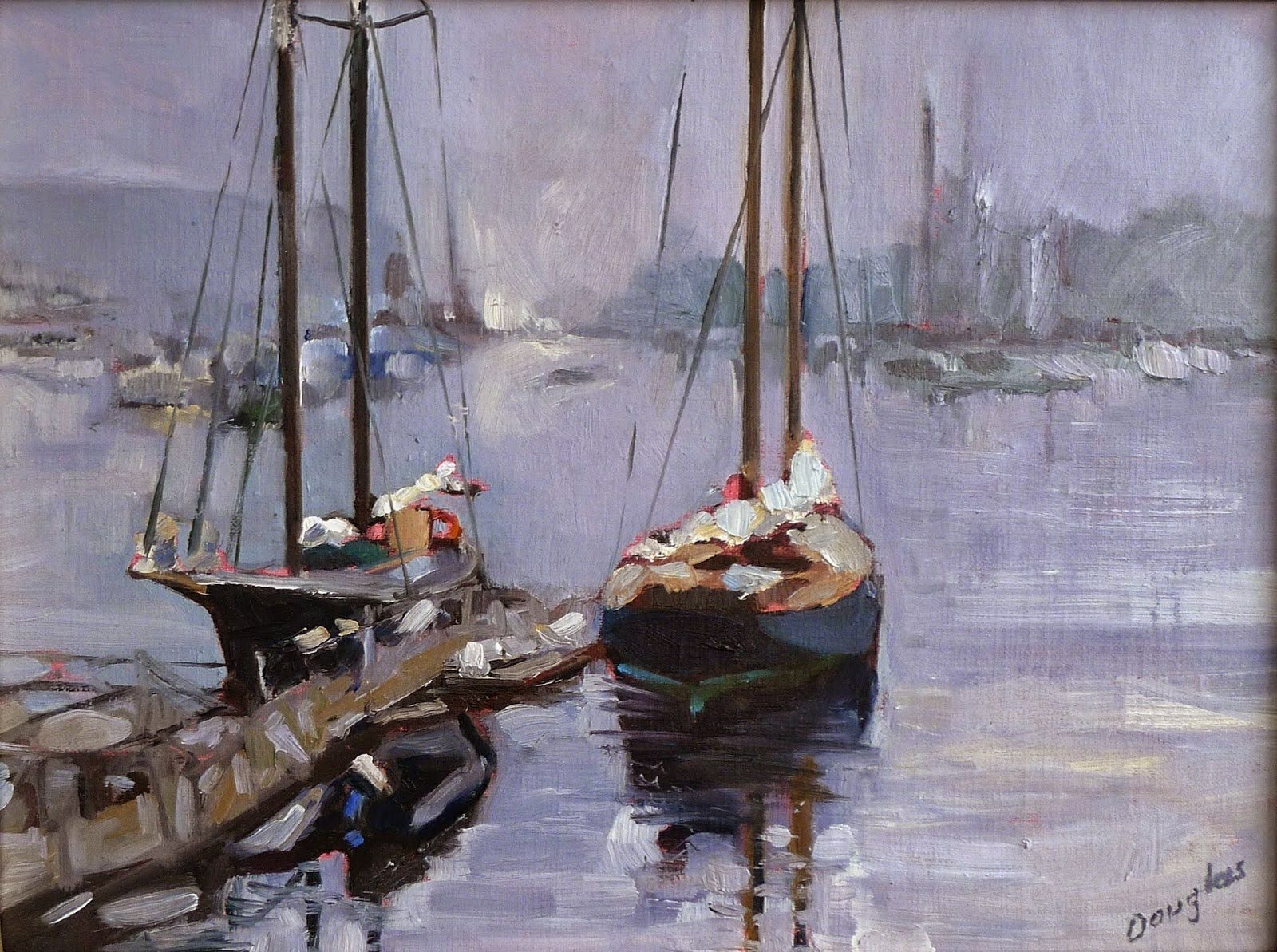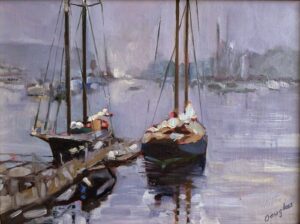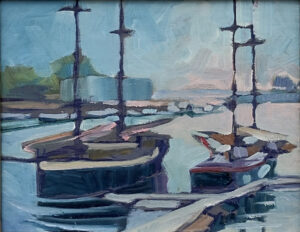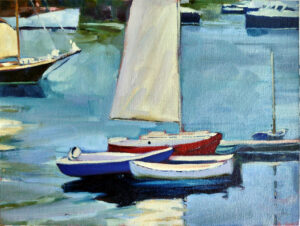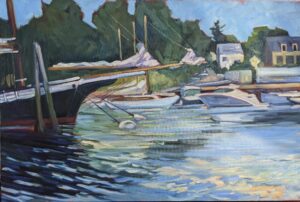I own one skirt and one dress, but I must combine painting and public events over the next ten days. I Googled what to wear to an art show to give myself ideas. The consensus was:
Men should wear a blazer or sport coat, dress shirt, nice trousers or dark jeans, and polished shoes. For contemporary work, they should wear trendy shirts, slim-fit pants or jeans, and stylish sneakers or shoes.
Women should wear a chic dress, skirt or stylish pantsuit, paired with heels or fashionable flats. For contemporary work, they should wear fashion-forward dresses or outfits, statement accessories, and stylish shoes. I don’t own any stylish shoes.

This all reminds me of Chelsea back in the day. My goddaughter and I had gone to Brad Marshall’s and Cornelia Foss’ openings, and were catching our breath on the street. We started to count how many people were wearing those heavy black plastic glasses that were then so cutting-edge. We stopped at a hundred. These people were deeply concerned with what to wear to an art show. Being seen is some people’s raison d’etre.
In Maine, people are not such slaves to fashion. This is a state where we have flannel and Sunday-go-to-meetin’ flannel. At any rate, I don’t care what you wear, just mark these three dates on your calendar, and come out and support us.
Friday, July 12, 2024: Painting in Paradise student show, 5-7 PM
I’m teaching my first of this season’s workshops this week. Since my gallerage (my own coinage, and I like it) is now open, I will be showing their work on Friday evening from 5-7 PM.
The gallerage is located at 394 Commercial Street, Rockport, and we’d love to see you.
This group is keeping me alert, as they’re all very able. I go home every afternoon wondering how I’ll organize the next day’s material to keep them interested. (I never want anyone to go home feeling bored, or worse, ignored.)
If you’ve ever wondered what kind of painting gets done in a workshop, this is an excellent opportunity to find out.
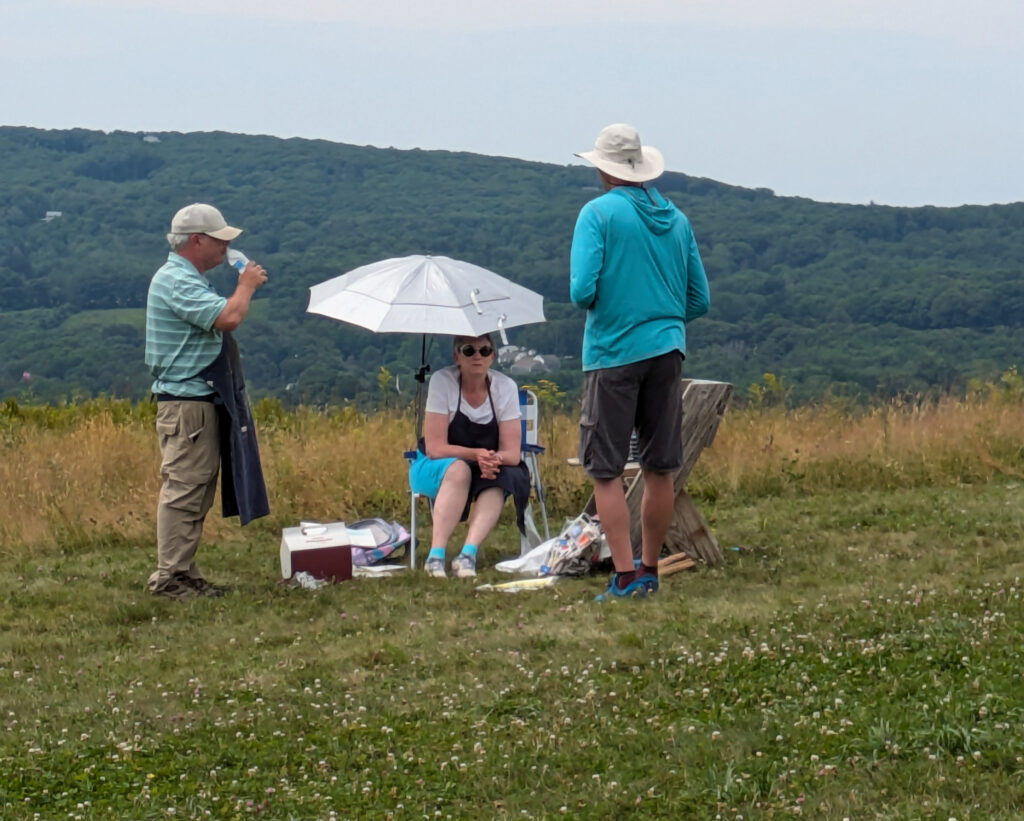
July 18, 2024: Camden Art Walk
Galleries and shops are open all through town. I’ll be at Lone Pine Realty, 19 Elm Street (next to Zoot Coffee). Last month’s Art Walk was rained out, and I went home with cookies, wine, and lemonade, none of which are on my diet. This month, don’t make me drink alone!

July 19-21, 2024: Camden on Canvas
“Twenty-one notable New England landscape artists will paint en plein air.” I like repeating that, because I am one of those painters. We’ll be at sites in Camden and Rockport from Friday morning, July 19, to noon on Sunday, July 21. I haven’t decided exactly where I’ll paint, but I’ve narrowed it down to either Curtis Island (bring your dinghy) or Fernald’s Neck, unless I change my mind. You can find out exactly where I and the other artists are by visiting the Camden on Canvas Information Tent outside the library’s Atlantic Avenue entrance. Or check my Facebook or Instagram feeds.
The wet paintings exhibit will be open to the public at the historic Camden Amphitheatre, Sunday, July 21, from 1-3 PM. After that, there’s a reception and live auction from 4-6 PM. Tickets can be purchased online for $75 each or by calling 207-236-3440. Proceeds are shared equally between the Library’s Campaign for the Future and the artists.
Reserve your spot now for a workshop in 2025:
- Advanced Plein Air Painting, Rockport, ME, July 7-11, 2025.
- Sea and Sky at Acadia National Park, August 3-8, 2025.
- Find Your Authentic Voice in Plein Air, Berkshires, MA, August 11-15, 2025.
- Immersive In-Person Fall Workshop, Rockport, ME, October 6-10, 2025.

